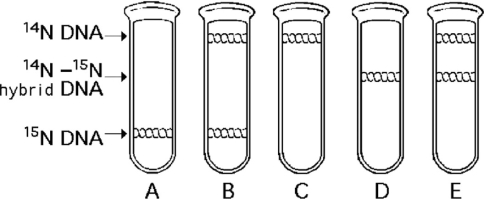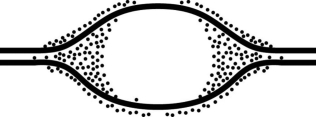Multiple Choice
 Figure 13.1
Figure 13.1
- Figure 13.2
Figure 13.2
In an experiment, DNA is allowed to replicate in an environment with all necessary enzymes, dATP, dCTP, dGTP, and radioactively labeled dTTP (3H thymidine) . After several minutes, the DNA is switched to nonradioactive medium and is then viewed by electron microscopy and autoradiography. Figure 13.2 represents the results. It shows a replication bubble, and the dots represent radioactive material. Which of the following is the most likely interpretation of the results?
A) There are two replication forks going in opposite directions.
B) Thymidine is being added only where the DNA strands are farthest apart.
C) Thymidine is being added only at the very beginning of replication.
D) Replication proceeds in one direction only.
Correct Answer:

Verified
Correct Answer:
Verified
Q2: In a nucleosome,the DNA is wrapped around<br>A)polymerase
Q3: The leading and the lagging strands of
Q7: In his transformation experiments, what did Griffith
Q8: How does a bacterial cell protect its
Q17: What is meant by the description "antiparallel"
Q29: Why do histones bind tightly to DNA?<br>A)
Q31: What is the most logical sequence of
Q39: What is the basis for the difference
Q47: The elongation of the leading strand during
Q57: In his work with pneumonia-causing bacteria and